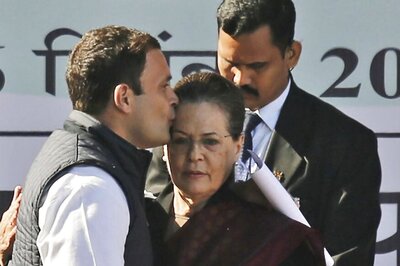
views
New Delhi: Quietly, the latest addition to BJP's organizational structure completed its second birthday last week. The Margdarshak Mandal, a unique panel of veterans who find themselves sitting on the sidelines of the power structure, haven't met even once.
The grand conclave of the state core committees of the BJP earlier this week addressed by the Prime Minister Narendra Modi marks subtle yet significant structural alterations with the institutionalization of the Core Group in the party's organisational edifice in the provinces.
However very little is known whether the similar dialogue mechanism is operational at the Centre or not.
For a better understanding of these changes in the BJP of 2016, we will have to go back a little in history and revisit the genesis of the Core Group in the party.
About a month after the shock defeat in 2004 general elections, BJP and RSS leaders met in Delhi to introspect and chart the future course of action.
The real fireworks started mid-way into the brainstorming session when a very senior leader and former president alleged that a centralised decision-making process within the party had led to the alienation of the rank and file.
He listed this as one of the major reasons behind the electoral debacle. There is no dialogue within the BJP at the top level and decisions are taken unilaterally, he rued.
A month or so after this threadbare dissection on BJP's defeat, it was decided that the top party brass should meet more regularly to discuss and help party president formulate a coherent stand on key issues.
And thus the core group came into existence: to make decision making broad-based and inclusive. Over the years the provincial units followed suit. Interestingly, Core Group is an arrangement which does not find a mention in the party constitution.
Then comes Central Election Committee which vets and clears party's electoral nominations.
National Executive, with 180-odd members drawn from all states, is a much larger body which meets every quarter to ratify every major decision and party line in the interim.
Next in the echelons is the National Council which meets annually and has the powers to endorse or reject statutory changes in the party constitution.
The day-long meeting of all the state core groups in Delhi this Tuesday- the first of its kind in the BJP- has for once institutionalised the concept of core group in the states. It has empowered these much smaller and compact sub-groups to play a more assertive role within.
In an interesting conversation this reporter had with KN Govindacharya a few years ago, the former BJP General Secretary delineated the working relationship between Atal Bihari Vajpayee and L K Advani during their prime.
Vajpayee gave un-bridled freedom to Advani in running the party. But, the guiding principle behind this arrangement was - whenever there was dispute or a difference of opinion, it was Vajpayee who would prevail.
He could hardly recall any exception to the unwritten rule. This arrangement worked wonderfully well for the Advani-Vajpayee duo for almost four decades.

















Comments
0 comment